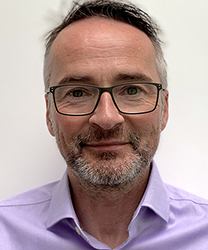
By Dave Kelman, project director for Crosswind Developments
Towns and cities have always been places for people to meet and interact, with workers arriving in the morning and leaving at the end of the day like the flow and ebb of the tide. This rhythm produces the vitality that defines so many great cities, making them stimulating and compelling environments for business, pleasure and general wellbeing.
But in the wake of Covid, isn’t it about time that the public realm was designed with people at its heart creating spaces with a scale and interest that we naturally respond to?
Cities are used primarily by people, not vehicles or buildings, yet how people want to behave and interact isn’t really prioritised. The grandeur of the public spaces, the width of the boulevards, the ‘statement architecture’ all seem to come first. Look at the thousands of pages of regulations, standards and guidance devoted to the quest for free, safe and unimpeded movement of vehicles in places that should actually be designed fundamentally for walking or cycling.
Before motorised transport, streets and public spaces were based on pedestrian movement and their scale reflected this whether designed for market trade, religion or local government. More recently within five miles of the centre of London average vehicle speed fell by 2.48 mph to just 7.1 mph between 2016 and 2019.
Imagine an entire town or city centre where pedestrians and cyclists have unchallenged priority; where it is vehicles that are marginalised and obliged to give way. How liberating would that be? And how much livelier and more interesting would the spaces become with a human scale that people can relate to?
Vast open public spaces limit physical interaction, putting people too far apart to engage with each other spontaneously. The sense of human scale is lost with a uniformity of experience which palls quickly. Any urban environment should work at walking pace and at human eye-level, rather than through a car window.
Since our days as cave-dwellers humans have gravitated towards the edges of space for safety and this instinct is still evident today. You just need to watch how people move in the large public city squares or the piazzas of Italian towns. Simply reducing vehicles is only a partial answer.
Whilst suburbia can be inane and sterile lacking the atmosphere or people to generate the vitality of denser mixed-use urban areas, cities need open spaces for recreation and to breathe. Shared, overlooked open spaces can be adopted by residents, providing opportunities for locally grown food, increased biodiversity and addressing climate change through sustainable drainage initiatives. Community orchards, allotments, play areas, wildflower meadows and wetlands all provide opportunities for improved well-being while bringing people together.
Unsurprisingly research has shown that people who live within 10 minutes’ walk of a local urban green space are twice as likely to achieve the recommended levels of healthy walking (2.5 hours) per week as those who did not and are more than twice as likely to be satisfied with life.
A positive way of tackling CO2 emissions is to reduce the need for private vehicle travel, especially single-occupancy cars. The much talked about 20-minute neighbourhood, with most of what you need to live and work within easy walking distance, frees people up to walk and cycle locally, meet people and get to know the local retailers and neighbours in their community.
The environmental impact of cars and the resulting taxation will make private car ownership increasingly unattractive in the future. Public transport, active travel, car clubs and car sharing will steadily replace many private cars, but having evolved with cars at their heart, the cities we’ll be left with will need to be reclaimed sympathetically for pedestrians and cyclists.
Copenhagen, Melbourne and Vienna are leading the way in terms of this reclamation and they frequently top the lists of ‘most liveable cities in the world’, delivering liveability, sustainability and better health for their residents. They have demonstrated that removing cars doesn’t reduce retail footfall, instead shopping becomes a more varied and richer experience.
As the pioneer in people-centred urban design Jan Gehl says: “If you make streets better for cars you get more traffic. If you make more bicycle infrastructure you get more bicycles. If you invite people to walk more and use public spaces more, you get more life in the city. You get what you invite.”











